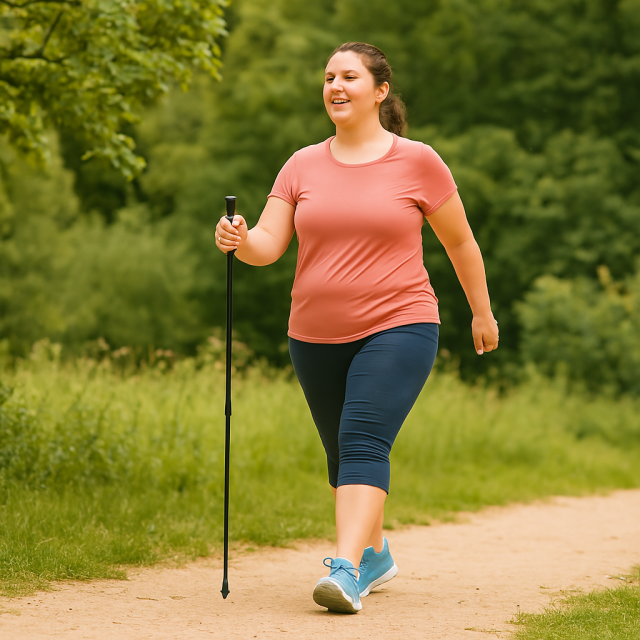Introduction
Prediabetes serves as a critical warning sign, indicating elevated blood sugar levels that haven’t yet reached the threshold for type 2 diabetes. Fortunately, with timely and targeted lifestyle interventions, it’s possible to reverse prediabetes and significantly reduce the risk of progressing to diabetes. This article explores effective lifestyle changes for prediabetes, offering clinicians and healthcare professionals practical strategies to guide their patients toward better health outcomes.
Table of Contents
- Understanding Prediabetes
- Dietary Modifications
- Physical Activity
- Weight Management
- Stress Reduction
- Sleep Hygiene
- Patient Education and Support
Understanding Prediabetes
Prediabetes is characterized by blood glucose levels that are higher than normal but not high enough to be classified as diabetes. According to the American Diabetes Association, individuals with prediabetes have a fasting blood sugar level between 100 and 125 mg/dL or an A1C level between 5.7% and 6.4%. Without intervention, many individuals with prediabetes may develop type 2 diabetes within five years.
Dietary Modifications
Implementing dietary changes is a cornerstone in reversing prediabetes. Encouraging patients to adopt a balanced diet rich in whole foods can improve insulin sensitivity and promote weight loss. Key dietary recommendations include:
- Increase Fiber Intake: Consuming fiber-rich foods such as vegetables, fruits, legumes, and whole grains can help regulate blood sugar levels and promote satiety.
- Choose Low-Glycemic Index Foods: Foods with a low glycemic index, like legumes and non-starchy vegetables, cause a slower rise in blood sugar levels, aiding in better glucose control.
- Limit Processed Foods and Added Sugars: Reducing the intake of processed foods and sugary beverages can prevent rapid spikes in blood glucose levels.
Physical Activity
Regular physical activity enhances insulin sensitivity and aids in maintaining a healthy weight. The American Diabetes Association recommends at least 150 minutes of moderate-intensity aerobic exercise per week, such as brisk walking or cycling. Additionally, incorporating resistance training exercises at least twice a week can further improve muscle mass and glucose metabolism.
Weight Management
Achieving and maintaining a healthy weight is pivotal in reversing prediabetes. Even a modest weight loss of 5% to 10% of body weight can significantly reduce the risk of developing type 2 diabetes. Healthcare providers should work with patients to set realistic weight loss goals and develop personalized plans that include dietary changes and increased physical activity.
Stress Reduction
Chronic stress can negatively impact blood sugar levels and insulin sensitivity. Encouraging patients to engage in stress-reducing activities such as mindfulness meditation, deep breathing exercises, or yoga can be beneficial. These practices not only help in managing stress but also contribute to overall well-being.
Sleep Hygiene
Poor sleep quality and insufficient sleep are associated with an increased risk of insulin resistance and prediabetes. Advising patients to aim for 7-9 hours of quality sleep per night and to maintain a consistent sleep schedule can support metabolic health. Addressing sleep disorders such as sleep apnea is also crucial in managing prediabetes effectively.
Patient Education and Support
Educating patients about prediabetes and involving them in their care plans can empower them to make informed decisions. Providing resources, such as the National Diabetes Prevention Program, can offer structured support and guidance. Additionally, connecting patients with community resources or support groups can enhance motivation and adherence to lifestyle changes. Check out the patient-to-patient support forums on HealingWell.
Conclusion
Reversing prediabetes is achievable through comprehensive lifestyle modifications. As healthcare professionals, guiding patients to implement changes in diet, physical activity, weight management, stress reduction, and sleep hygiene can significantly reduce their risk of progressing to type 2 diabetes. Collaborative efforts and ongoing support are essential in empowering patients to take control of their health.
FAQs
What is the most effective lifestyle change for reversing prediabetes?
Combining a healthy diet with regular physical activity has been shown to be the most effective approach in reversing prediabetes. This combination aids in weight loss, improves insulin sensitivity, and helps regulate blood sugar levels.
Can prediabetes be reversed without medication?
Yes, many individuals can reverse prediabetes through lifestyle modifications alone, such as dietary changes, increased physical activity, and weight management. However, it’s important to work with a healthcare provider to determine the best approach for each individual.
How long does it take to reverse prediabetes?
The time frame varies depending on individual factors such as adherence to lifestyle changes, initial health status, and genetic predisposition. Some individuals may see improvements in blood sugar levels within a few months, while others may take longer.
Is weight loss necessary to reverse prediabetes?
While weight loss can significantly improve insulin sensitivity and reduce the risk of developing type 2 diabetes, individuals who are not overweight can still benefit from other lifestyle changes such as improved diet and increased physical activity.
Are there any specific diets recommended for reversing prediabetes?
Diets rich in whole foods, high in fiber, and low in processed sugars are generally recommended. The Mediterranean diet and the DASH diet are examples of eating patterns that have been shown to improve metabolic health.
